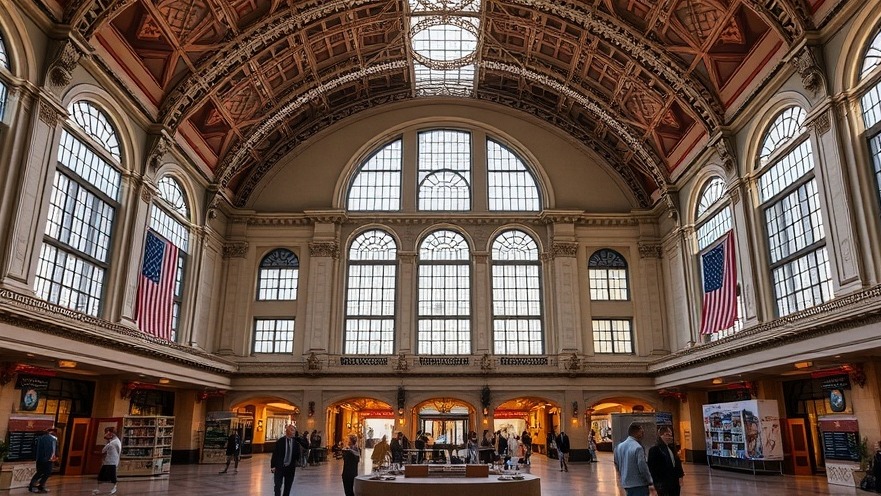
Trump's Bold Move: Regaining Control of Union Station
In a significant development in Washington, President Donald Trump is set to reclaim management of Washington's iconic Union Station, a move that underscores his administration's focus on revitalizing what he describes as a neglected property. Announced by the U.S. Transportation Department, this decision comes amidst broader efforts by Trump to increase federal authority over the capital, which has seen years of declining infrastructure and public safety concerns.
Why Union Station Matters
Opened in 1907, Union Station is not just a transit hub; it's a historic icon in the heart of Washington, D.C. Serving millions of passengers each year, this Beaux-Arts masterpiece stands as a testament to American railway history, contributing significantly to the economy of the Northeast Corridor. With past management by a nonprofit in collaboration with Amtrak, many have criticized the station's condition, blaming it for issues ranging from cleanliness to safety. The federal government’s takeover, led by Transportation Secretary Sean Duffy, aims to address these concerns directly.
Plans for Renovation and Enhanced Management
Officials are optimistic about the potential transformation Union Station could undergo. Transportation Secretary Duffy emphasized that the government is prepared to make substantial investments to uplift the station and ensure it offers a welcoming environment for travelers. This includes not only tackling cleanliness and security issues but also seeking to attract new tenants and revenue.
The Political Implications of Management Changes
While Duffy insists that taking control of Union Station is not a political maneuver, it is hard to ignore the broader implications of this decision. Trump's recent claims concerning crime rates in Washington have already sparked controversy, with many local officials feeling the pressure of increased federal oversight. Mayor Muriel Bowser has expressed support for federal investment while criticizing the mayoral budget that lacks the estimated $8 billion required for renovations. This scenario sets the stage for a potential clash over responsibility and funding priorities between local and federal entities.
The Future of Amtrak and Broader Transportation Initiatives
In related news, Amtrak has unveiled new Acela trains for the busy Northeast Corridor, which highlights the rail service's commitment to upgrading its offerings despite past funding cuts proposed by the Trump administration. The planned federal takeover of Union Station aligns with a more extensive transportation modernization effort. As the federal government steps in, the Biden administration's previous plans for Union Station's redevelopment appear to be scrapped, raising questions about the direction of future transportation strategies in the region.
Evolving Perspectives on Public Safety and Infrastructure
This takeover raises critical questions about the balance of power in managing urban infrastructure and ensuring public safety. Supporters of the federal government’s involvement argue that local authorities have failed to address these issues effectively, while critics view it as an overreach of federal power into local governance. As the situation develops, stakeholders from various sectors will be watching closely to gauge the impact on commuters, local businesses, and the overall community.
Conclusion: The Stakes are High
As President Trump embarks on this ambitious project, the eyes of the nation will be keenly focused on the outcomes of this decision, not just for Union Station but for the entire transportation narrative in Washington. If successful, it could signal a new era of revitalization for structures long overlooked, with expectations of expanded federal oversight leading to a safer and more efficient transit environment. For citizens and commuters alike, the stakes are high as they await the realization of improvements that Union Station so desperately needs.
 Add Element
Add Element  Add Row
Add Row 



Write A Comment